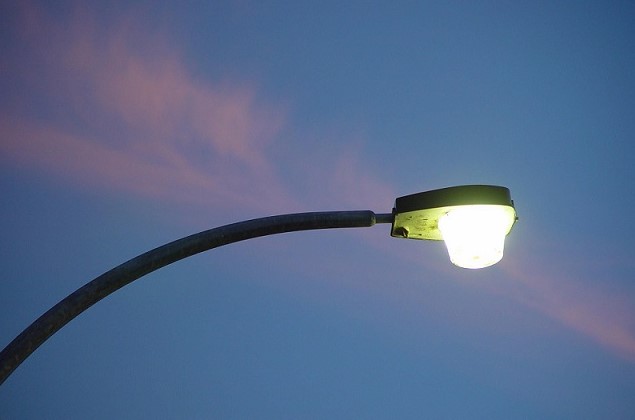In the realm of urban infrastructure, street lighting plays a vital role in enhancing safety, security, and overall aesthetics. With advancements in technology, traditional lighting systems are evolving into smart and efficient solutions. The concept of Street Light Control encompasses various methods and technologies aimed at managing and optimizing illumination levels in public spaces. From dimming capabilities to adaptive lighting systems, the landscape of street light control is continuously evolving to meet the demands of modern cities.
Shedding Light on Smart Lighting Solutions
Smart lighting solutions revolutionize traditional street lighting by incorporating sensors, wireless connectivity, and data analytics. These systems offer dynamic control over brightness levels, allowing municipalities to adjust lighting based on factors such as traffic flow, weather conditions, and time of day. By harnessing the power of automation and real-time monitoring, smart street lights optimize energy usage and minimize light pollution.
The Role of IoT in Street Light Management
The Internet of Things (IoT) has emerged as a cornerstone of modern street light control systems. IoT-enabled devices, such as sensors and actuators, enable seamless communication between street lights and centralized management platforms. This connectivity facilitates remote monitoring, predictive maintenance, and performance optimization, empowering cities to create more sustainable and resilient lighting infrastructures.
Advantages of Street Light Control
Energy Efficiency and Cost Savings
One of the primary benefits of street light control is its ability to enhance energy efficiency and reduce operational costs. By dynamically adjusting lighting levels based on real-time conditions, municipalities can significantly lower electricity consumption without compromising on safety or visibility. Moreover, the implementation of LED technology further enhances energy savings and extends the lifespan of lighting fixtures.
Enhanced Safety and Security
Effective street light control contributes to improved safety and security in urban environments. Well-lit streets deter criminal activity, enhance visibility for pedestrians and motorists, and create a sense of community vigilance. With features like motion sensors and adaptive lighting, cities can proactively respond to potential safety threats and create safer public spaces for residents and visitors alike.
Implementing Street Light Control Systems
Key Components of Street Light Control Systems
Street light control systems consist of several interconnected components, including luminaires, controllers, sensors, and communication networks. Luminaires serve as the physical light sources, while controllers regulate brightness levels and manage system operations. Sensors, such as motion detectors and ambient light sensors, gather data to inform lighting adjustments, while communication networks facilitate data exchange between individual fixtures and central management platforms.
Integration with Smart City Initiatives
The deployment of street light control systems aligns with broader smart city initiatives aimed at leveraging technology to enhance urban livability and sustainability. By integrating street lighting with other smart infrastructure components, such as traffic management systems and environmental sensors, cities can achieve synergistic benefits and optimize resource allocation across multiple domains.
FAQs (Frequently Asked Questions)
How do street light control systems contribute to energy conservation?
- Street light control systems optimize energy usage by dynamically adjusting brightness levels based on real-time conditions, thereby reducing unnecessary illumination during periods of low activity.
Are smart street lights vulnerable to cyber attacks?
- While smart street lights introduce connectivity and automation, they also raise concerns about cybersecurity. Implementing robust encryption protocols and regularly updating firmware can mitigate the risk of cyber attacks and safeguard critical infrastructure.
Can street light control systems be retrofitted into existing infrastructure?
- Yes, many street light control solutions offer retrofitting options that allow municipalities to upgrade their existing lighting infrastructure without significant disruption or cost.
What role does data analytics play in street light management?
- Data analytics enable cities to gain insights into lighting performance, energy consumption patterns, and maintenance needs. By analyzing this data, municipalities can optimize lighting strategies, predict maintenance requirements, and improve overall efficiency.
How do adaptive lighting systems respond to changing environmental conditions?
- Adaptive lighting systems leverage sensors to monitor factors such as ambient light levels, pedestrian traffic, and weather conditions. Based on this data, the system dynamically adjusts brightness levels to optimize visibility while minimizing energy consumption.
What are the environmental benefits of LED street lighting?
- LED street lighting offers several environmental benefits, including reduced energy consumption, lower greenhouse gas emissions, and decreased light pollution. Additionally, LED fixtures are highly durable and require less frequent replacement, further reducing environmental impact.
Conclusion
Street light control represents a cornerstone of modern urban infrastructure, offering cities the tools to enhance energy efficiency, safety, and sustainability. By embracing smart lighting solutions and leveraging advanced technologies such as IoT and data analytics, municipalities can create vibrant, resilient communities while minimizing environmental impact. As cities continue to evolve, street light control will remain a pivotal element in shaping the future of urban living.
